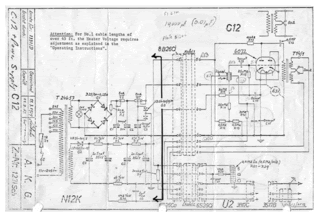Hello,
I plan to mod an t.bone SCT2000 (same inner life as Nady TCM 1050, Alctron HSGT-2B) to be a more U47 alike.
For now I decided to do the following:
Change the capsule to a microphone-parts.com CK-47.
Change the tube to a NOS 6072a.
Change the transformer to a TAB-Funkenwerk T-14 or a T-11 or a T-47, because the Cinemag seems to sound too clean for my taste.
Remove RF filtering caps C9 and C10.
Replace C8.
Remove cathode follower.
Change zener diodes D5 and D6 in the power supply to 56V.
On Fox Audio Reearch they seem to connect both halves of the tube in parallel to get a more VF14 like behaviour:
http://foxaudioresearch.ca/The47.htm (Look for topic "New Circuit ...")
When I wanna do that too, what capacitors do I have to change to half their values afterwards? C8? Which capacity is right? Any others?
What pins of the tube do I have to connect with?
Are there any other changes nessecary for this mod?
Any help is appreciated.
Sirko
I plan to mod an t.bone SCT2000 (same inner life as Nady TCM 1050, Alctron HSGT-2B) to be a more U47 alike.
For now I decided to do the following:
Change the capsule to a microphone-parts.com CK-47.
Change the tube to a NOS 6072a.
Change the transformer to a TAB-Funkenwerk T-14 or a T-11 or a T-47, because the Cinemag seems to sound too clean for my taste.
Remove RF filtering caps C9 and C10.
Replace C8.
Remove cathode follower.
Change zener diodes D5 and D6 in the power supply to 56V.
On Fox Audio Reearch they seem to connect both halves of the tube in parallel to get a more VF14 like behaviour:
http://foxaudioresearch.ca/The47.htm (Look for topic "New Circuit ...")
When I wanna do that too, what capacitors do I have to change to half their values afterwards? C8? Which capacity is right? Any others?
What pins of the tube do I have to connect with?
Are there any other changes nessecary for this mod?
Any help is appreciated.
Sirko







